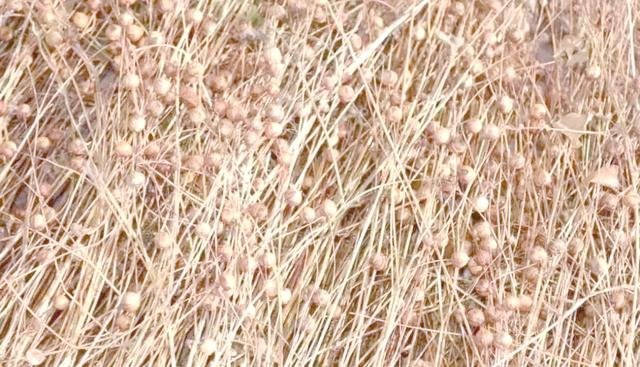
As sustainability moves from a niche to a necessity, brands around the globe are racing to replace resource-intensive fabrics with more eco-friendly alternatives. Among them, hemp clothing is emerging as a game changer—not just because it’s green, but because it’s strong, breathable, and cost-effective for scalable production. For B2B buyers, hemp offers more than environmental virtue; it’s a strategic material choice that balances performance, price, and planet.
Hemp clothing is a sustainable and versatile option for B2B buyers, offering benefits like high durability, moisture-wicking performance, and low environmental impact compared to conventional cotton or synthetics. Its rapid growth cycle, minimal water needs, and naturally pest-resistant properties make it ideal for eco-conscious product lines.
When a European streetwear brand partnered with SzoneierFabrics to switch their graphic tees from cotton to a custom hemp-organic cotton blend, they didn’t just reduce water use by 70%—they also saw a 40% increase in email list signups after launching their “Low Impact. High Style.” campaign. It’s proof that hemp can drive both values and value.
What Is Hemp Fabric and How Is It Made for Clothing Use?
Hemp fabric is a natural textile made from the stalks of the cannabis sativa plant. It is processed through mechanical or enzymatic retting, spun into yarn, and woven or knitted into durable, breathable fabric suitable for apparel and home goods.
Unlike synthetic fibers or even conventional cotton, hemp doesn’t require intensive inputs. Its minimal resource footprint and versatility across fashion, performance wear, and interior textiles make it a compelling choice for B2B sourcing.
Understanding the Hemp Fabric Production Process
1. Hemp Fiber Extraction Methods
| Retting Method | Process Type | Impact on Fabric Quality |
|---|---|---|
| Water Retting | Traditional, labor-intensive | High-quality fiber, slower |
| Enzymatic Retting | Eco-friendly enzymes | Smooth, soft texture |
| Mechanical Decortication | Fast, industrial | Coarser, stronger fiber |
For fashion-grade hemp fabric, enzymatic retting is preferred due to the smoother feel it imparts to the final textile—ideal for T-shirts, dresses, and loungewear.
2. Weaving & Blending Options
Hemp yarn can be used on its own or blended with:
- Organic cotton: for a soft, everyday texture
- TENCEL™ or bamboo: for luxury drape and breathability
- Recycled polyester: for performance stability and stretch
3. Finishings for Comfort & Aesthetic
To enhance hemp’s market appeal, it often undergoes:
- Enzyme washing (for softness)
- Silicone coating (for smoother hand-feel)
- Digital printing or dyeing (for brand visuals)
SzoneierFabrics offers custom hemp blends with pre-shrunk, pre-dyed options that allow for consistent results during bulk production.
Why Is Hemp Considered a Sustainable Textile for the Apparel Industry?
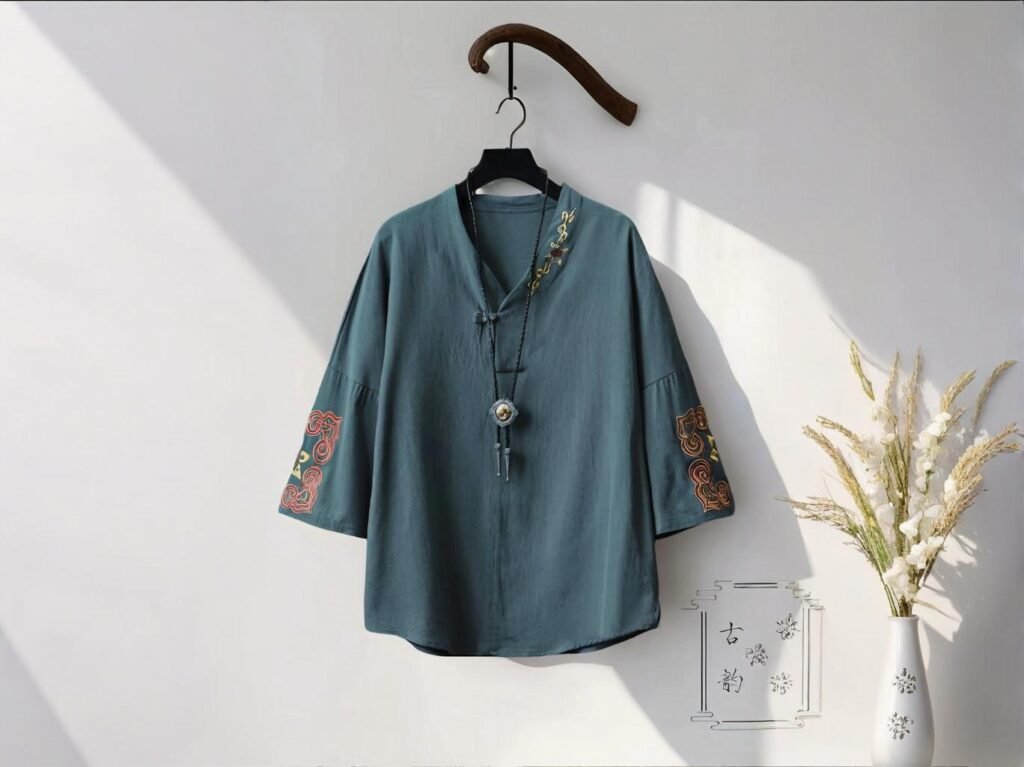
Hemp is one of the most sustainable fabrics in the apparel industry because it grows quickly, uses minimal water and no pesticides, enriches soil health, and produces biodegradable fibers with high yield per acre.
Its environmental credentials are not just impressive—they’re measurable. Compared to cotton, hemp uses 50% less water, no chemical pesticides, and yields 2x more fiber per hectare, making it a top material for responsible brands and manufacturers.
Environmental Advantages of Hemp vs. Other Fabrics
1. Water & Land Use
| Fabric Type | Water Needed (Per Kg Fiber) | Yield Per Hectare (Kg) |
|---|---|---|
| Hemp | \~300–500 L | 1,500–2,000 |
| Cotton | \~10,000–20,000 L | 500–800 |
| Polyester | N/A (synthetic) | High, but non-renewable |
A report from the Stockholm Environment Institute found that hemp requires 70–90% less water than cotton across its cultivation and processing cycle.
2. Pesticide & Chemical-Free Farming
Hemp grows fast and outcompetes weeds naturally, reducing the need for:
- Herbicides
- Insecticides
- Fungicides
This also protects farmers and surrounding ecosystems—key for B2B buyers aiming for GOTS or OEKO-TEX certifications.
3. Carbon Sequestration & Soil Health
Hemp’s root system:
- Aerates soil
- Removes toxins (phytoremediation)
- Absorbs 1.6x more CO₂ per hectare than most trees
A wellness apparel startup that sourced hemp-lyocell blends from SzoneierFabrics highlighted “carbon-negative cultivation” in its marketing, which helped them land a feature in a leading green fashion magazine.
4. End-of-Life Circularity
- Hemp is 100% biodegradable
- Can be composted or repurposed into recycled yarn
- Compatible with cradle-to-cradle design certifications
How Does Hemp Compare to Cotton and Linen in Comfort and Durability?
Hemp fabric outperforms cotton and linen in durability, while offering comparable breathability and increasingly competitive softness thanks to modern finishing techniques. It’s naturally antimicrobial, highly absorbent, and holds shape better over time.
For B2B buyers choosing between plant-based fibers, hemp presents a robust, eco-conscious alternative. Though cotton may still win in softness (initially), hemp’s durability and sustainability give it long-term value—especially for products that demand both form and function.
Comparative Analysis of Hemp, Cotton, and Linen
1. Texture and Comfort
| Property | Hemp | Cotton | Linen |
|---|---|---|---|
| Initial Softness | Medium (can be improved) | Very soft | Crisp, then softens with use |
| Moisture Absorption | High (up to 20% of weight) | Moderate (around 10%) | Very high |
| Breathability | Excellent | Good | Excellent |
| Skin Sensitivity | Naturally hypoallergenic | Generally safe | Can be slightly abrasive |
Enzyme washing and blending make hemp nearly as soft as combed cotton while retaining its shape longer—ideal for fashion basics like T-shirts, polos, and casualwear.
2. Durability and Wear Resistance
| Metric | Hemp | Cotton | Linen |
|---|---|---|---|
| Tensile Strength | Very High | Medium | High |
| UV Resistance | Excellent | Moderate | Good |
| Shrinkage After Wash | Low | Moderate | High |
| Longevity (use cycles) | 3–4x Cotton | Standard | 2–3x Cotton |
A workwear uniform manufacturer in Australia switched from 100% cotton to hemp-cotton blends and reported a 36% reduction in fabric replacement rates over one year.
3. Environmental Performance
| Environmental Metric | Hemp | Cotton | Linen |
|---|---|---|---|
| Water Use (L/kg) | \~500 L | \~10,000 L | \~3,500–6,000 L |
| Chemical Inputs | None required | High (pesticides/fertilizers) | Low |
| Biodegradability | 100% | 100% | 100% |
Hemp wins in strength and sustainability, and with the right finishing or blending, can match the comfort of cotton or linen.
Which Types of Hemp Blends Work Best for Fashion and Performance Wear?
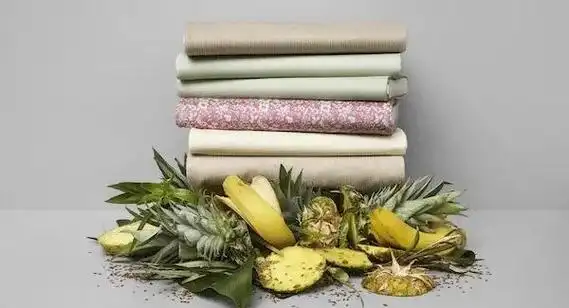
The most effective hemp blends for fashion and performance clothing include hemp-organic cotton (for basics), hemp-TENCEL™ (for luxury drape), hemp-lycra (for stretch and movement), and hemp-recycled polyester (for durability and sportswear).
Blending hemp with other fibers allows manufacturers to adjust comfort, stretch, cost, and aesthetic—making it a strategic tool for B2B buyers designing for specific markets, from luxury to lifestyle to activewear.
Recommended Hemp Blends for Apparel Segments
1. Hemp-Organic Cotton (60/40 or 55/45)
- Use Cases: T-shirts, hoodies, casualwear, kidswear
- Benefits:
- Balance between softness and breathability
- Easy to dye and print
- Ideal for sustainable streetwear brands
2. Hemp-TENCEL™ (50/50 or 70/30)
- Use Cases: Women’s fashion, loungewear, resortwear
- Benefits:
- Exceptional drape and fluidity
- Enhanced softness and moisture regulation
- Excellent for luxury fashion brands targeting eco-conscious consumers
A French womenswear label used a hemp-TENCEL™ blend for their spring collection of wide-leg trousers and wrap tops. The drape, dye hold, and soft sheen led to a 15% higher sell-through than the previous linen version.
3. Hemp-Recycled Polyester (60/40 or 70/30)
- Use Cases: Activewear, uniforms, bags
- Benefits:
- Increased abrasion resistance
- UV protection
- Maintains structure after multiple washes
4. Hemp-Spandex or Hemp-Lycra Blends
- Use Cases: Leggings, yoga wear, fitted tops
- Benefits:
- Enhanced flexibility and comfort
- Retains shape over time
- High sweat absorption with stretch
| Blend Type | Comfort | Durability | Sustainability | Price Range (USD/meter) |
|---|---|---|---|---|
| Hemp-Organic Cotton | High | High | Very High | \$8–\$12 |
| Hemp-TENCEL™ | Very High | Medium | Very High | \$10–\$14 |
| Hemp-Polyester | Medium | Very High | Medium | \$6–\$10 |
| Hemp-Spandex | High | High | High | \$9–\$13 |
SzoneierFabrics offers custom blend development services, allowing B2B buyers to tailor GSM, elasticity, and hand-feel according to target audience needs.
Is Hemp Clothing Suitable for Mass Production and Scalability?
Yes, hemp clothing is highly scalable for mass production thanks to advancements in fiber processing, globalized supply chains, and growing demand from eco-conscious markets. Modern spinning, knitting, and finishing technologies now allow hemp fabrics to meet commercial apparel requirements at competitive costs.
Once considered a niche material for artisan markets, hemp has now matured into a commercially viable option for bulk fashion and lifestyle production. China, India, and increasingly Europe are building robust hemp processing ecosystems, enabling B2B buyers to source large volumes with consistent quality and short lead times.
What Makes Hemp Suitable for Scale?
1. Improved Fiber Processing Technology
- Traditional hemp fibers were coarse and inflexible.
- Today, enzymatic retting, combed yarn spinning, and blending with soft fibers make hemp smoother and more consistent in texture.
| Process Innovation | Impact on Scalability |
|---|---|
| Enzyme Retting | Softer, more uniform fibers |
| Air Jet Spinning | Faster, more even yarn production |
| Circular Knitting | Efficient for T-shirt and jersey use |
| Digital Fabric Inspection | Ensures color and weave consistency |
At SzoneierFabrics, hemp-cotton jersey production runs have scaled to over 30,000 meters per month, meeting the needs of global clients in North America and Europe.
2. Factory Adaptability
Hemp can run on standard cotton or linen machines—no major retrofitting is required, which keeps production cost-effective and compatible with existing apparel supply chains.
3. Lead Time and Reorder Flexibility
- Sampling: 5–7 days
- Bulk Production: 15–25 days depending on order size
- Reordering: Consistent fiber specs allow repeatability
4. Global Availability
Top producing regions include:
- China: Largest exporter with technical fabric innovation
- India: Strong in blended handlooms and organic processing
- Romania & Ukraine: Niche suppliers with EU certifications
| Region | Strengths | MOQ Possibilities |
|---|---|---|
| China | Volume, low cost, customization | 300–500 meters |
| India | Organic certification, artisan blends | 100–300 meters |
| EU countries | Ethical compliance, nearshoring | 1000+ meters |
What Are the Cost and MOQ Advantages of Sourcing Hemp Fabrics in Bulk?
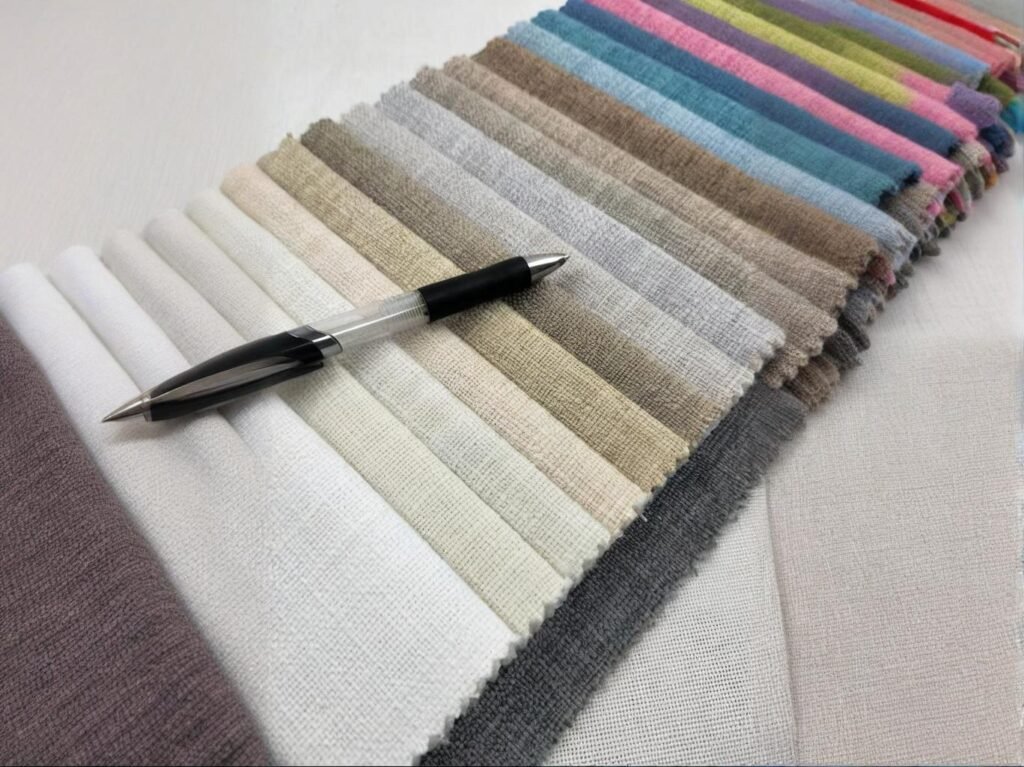
Hemp fabrics offer competitive pricing and favorable MOQ (minimum order quantity) structures for B2B buyers—particularly when blended with cotton, viscose, or recycled fibers. Prices typically range between \$6–\$15 per meter, with bulk discounts and factory-direct sourcing reducing costs further.
While premium organic hemp is slightly more expensive than conventional cotton, it pays off in durability, brand value, and sustainability marketing potential. MOQ flexibility also makes hemp a smart choice for brands testing new lines or launching limited collections.
Pricing and MOQ Breakdown for Hemp Fabrics
1. Pricing Factors
| Cost Component | Description |
|---|---|
| Fiber Quality | Long-staple enzymatic = higher cost |
| Blend Ratio | More hemp = higher durability, cost |
| Fabric Weight (GSM) | Heavier fabrics cost more per meter |
| Finishing Techniques | Digital printing, pre-shrinking add cost |
At SzoneierFabrics, base pricing for hemp-organic cotton jersey (200 GSM) starts at \$8.20/meter for orders of 300+ meters, with 5–10% discounts for larger volumes.
2. MOQ Flexibility by Fabric Type
| Fabric Type | Typical MOQ | Best For |
|---|---|---|
| Hemp-Cotton Jersey | 300 meters | T-shirts, basics |
| Hemp-Linen Woven | 200 meters | Shirts, blazers, table linens |
| Hemp-Polyester Canvas | 500 meters | Bags, uniforms, heavy outerwear |
| Hemp-TENCEL™ Blends | 300–500 meters | Dresses, resortwear, scarves |
| Printed Hemp Fabrics | 100 meters (digital) | Custom branding, limited drops |
3. Packaging and Logistics Support
- Roll or folded packing options
- Labeling and barcoding available
- Worldwide shipping via sea, air, or express courier
A UK-based lifestyle brand sourced 1,000 meters of hemp-viscose canvas for a home textile collection. SzoneierFabrics handled the pre-printing, roll packing, and export documentation—allowing the brand to go from concept to shelves in under 35 days.
4. Cost Advantage Over Time
- Longer lifecycle = fewer returns
- Higher perceived value = increased retail price
- More durable = less shrinkage or pilling = lower complaint rates
Brand Benefit: A U.S. menswear startup reduced post-sale refund rates by 18% after switching from cotton to hemp-cotton polos.
How Do Brands Use Hemp to Build Eco-Friendly and Ethical Product Lines?
Brands use hemp to build eco-friendly and ethical product lines by promoting its low-impact cultivation, biodegradable nature, and long-lasting performance. Hemp supports transparent supply chains, story-driven marketing, and compliance with global sustainability standards like GOTS and OEKO-TEX.
Hemp isn’t just a fabric—it’s a brand narrative. Whether you’re launching a limited capsule or overhauling your core collection, hemp gives companies the opportunity to align with consumer values around health, climate, and ethics.
Strategic Uses of Hemp for Brand Differentiation
1. Sustainability Messaging
- “Grown with 90% less water than cotton”
- “No synthetic pesticides or herbicides”
- “100% biodegradable, zero plastic content”
A wellness-focused loungewear company in Germany featured hemp prominently in their hangtags and product pages. The messaging helped them increase newsletter signups by 36% during their launch campaign.
2. Certifications and Labels
Hemp-based products can qualify for:
- GOTS (if organically cultivated)
- OEKO-TEX Standard 100 (non-toxic dyes)
- Cradle to Cradle Certified®
- B Corp supply chain audits
This allows brands to tap into certified marketplaces like Made Trade, Wolf & Badger, and EarthHero.
3. Cross-Segment Branding Opportunities
| Product Category | Hemp Application | Marketing Angle |
|---|---|---|
| Fashion Apparel | Shirts, pants, dresses | Eco-luxe, slow fashion |
| Activewear | Yoga pants, base layers | Breathable, sweat-wicking, natural |
| Home Textiles | Sheets, curtains, towels | Plastic-free, hypoallergenic |
| Accessories | Tote bags, hats, belts | Durable, sustainable alternatives |
4. Emotional & Ethical Storytelling
Customers connect with transparency. Stories about:
- Regenerative farming
- Supporting small-scale growers
- Circular product life cycles
…all contribute to greater loyalty and word-of-mouth growth.
A U.S.-based outdoor brand created a “Plant to Performance” microsite showing how their hemp gear was grown, spun, and sewn. It resulted in a 25% increase in average time on page and higher engagement across social media.
What Should B2B Buyers Look for When Partnering with a Hemp Fabric Manufacturer?
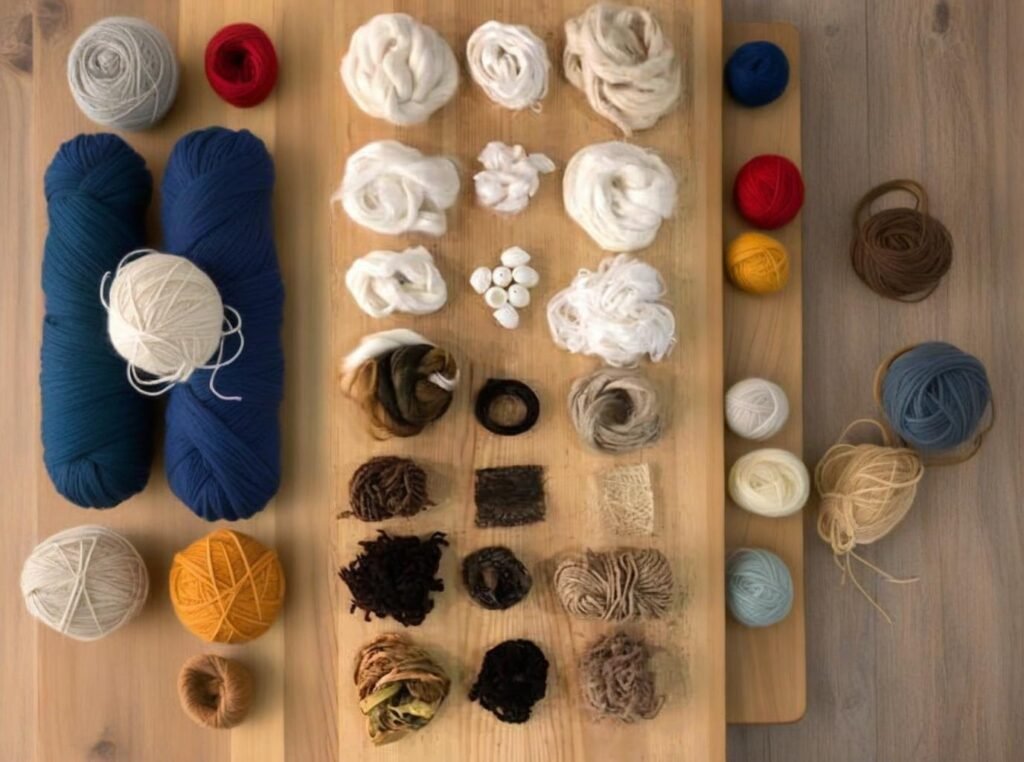
B2B buyers should prioritize hemp fabric manufacturers with proven textile expertise, low MOQs, fast sampling capability, strong R\&D, ethical certifications, and transparent export capabilities. These factors ensure reliability, customization, and scalability.
The global hemp boom has attracted many new suppliers—some reliable, others less so. Choosing the right partner is critical to ensure quality, delivery timelines, and regulatory compliance, especially for international brands.
Key Evaluation Criteria for B2B Hemp Sourcing
1. Customization Capabilities
- GSM, width, and weave adjustments
- Color-matching to Pantone codes
- Blending with cotton, viscose, or recycled polyester
- Surface treatments (e.g., sand wash, calendaring)
SzoneierFabrics offers free sampling and design consultation for brands needing fast iteration and prototyping.
2. MOQ and Scalability
Look for flexible MOQs for market testing and larger volume capacity for scale-up.
| Order Size | What to Expect with SzoneierFabrics |
|---|---|
| 50–100 meters | Ideal for samples, influencer drops |
| 300–500 meters | Capsule collections, seasonal campaigns |
| 1000+ meters | Mass production, multi-market launches |
3. Certifications and Compliance
Ensure your supplier supports:
- OEKO-TEX certified dyeing processes
- GOTS sourcing (where applicable)
- Export documentation and logistics
4. Speed and Communication
Timely sample delivery and transparent updates on:
- Yarn lead times
- Fabric production
- Shipping and customs
Ask for real-world references and swatch books. Quality is best assessed hands-on—SzoneierFabrics offers free swatches globally for qualified B2B leads.
Ready to Launch Your Own Hemp-Based Collection? Partner with SzoneierFabrics
Whether you’re creating sustainable T-shirts, launching an eco-yoga brand, or developing zero-waste home goods, SzoneierFabrics can bring your vision to life with custom hemp fabric solutions tailored for scale, quality, and impact.
🧵 Why Choose SzoneierFabrics for Hemp Clothing?
- ✔ Over 18 years of textile R\&D and manufacturing experience
- ✔ Low MOQs, fast sampling, and factory-direct pricing
- ✔ Blends available with cotton, viscose, polyester, TENCEL™, and more
- ✔ GOTS and OEKO-TEX compliant dyeing and finishing
- ✔ Free design consultation and fabric samples
Let’s build the next generation of hemp-powered fashion—together.

